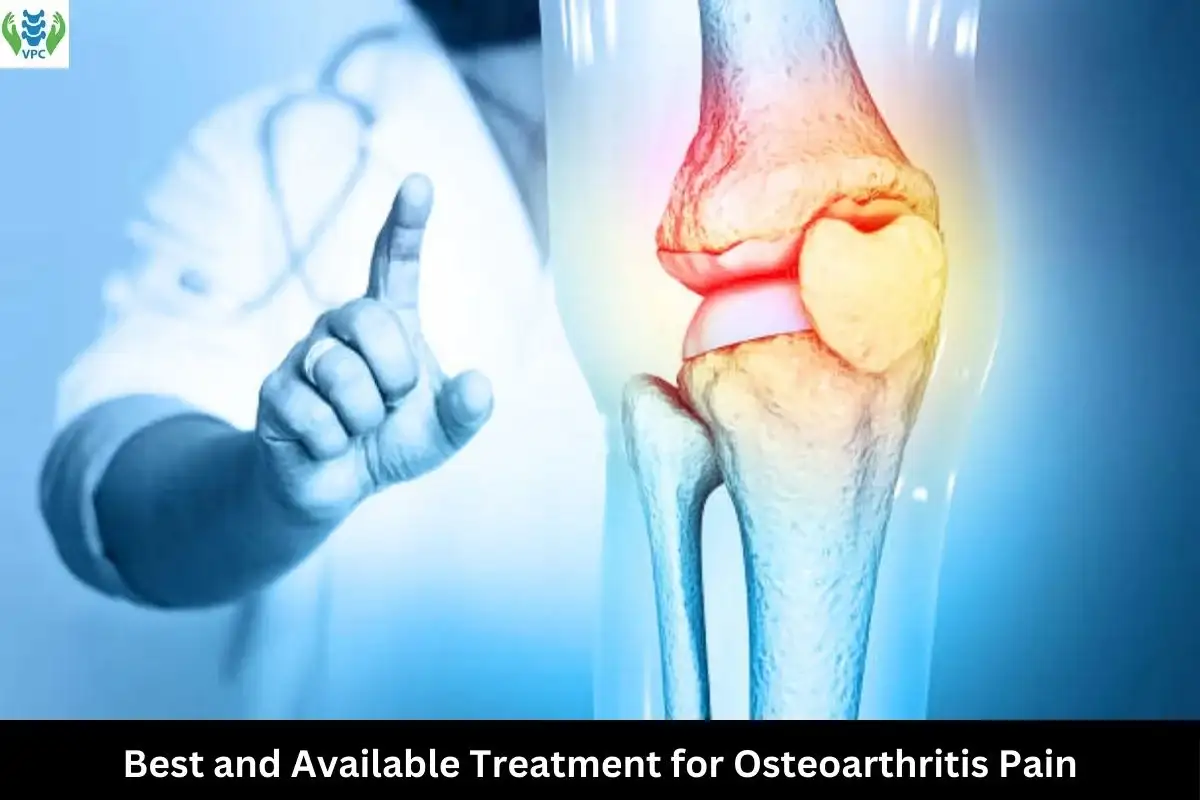The Best and Available Treatment for Osteoarthritis Pain
Osteoarthritis is a common condition that affects joints, including the knees, hips, hands, and spine. It occurs as the protective cartilage between bones gradually deteriorates, causing pain, stiffness, and limited mobility.
Identifying the proper treatment is vital to managing symptoms, slowing disease progression, and improving well-being. Fortunately, a wide range of treatment options allows individuals to explore different approaches and determine the most suitable treatment to enhance their quality of life. In this article, we will discuss the best treatment for osteoarthritis.
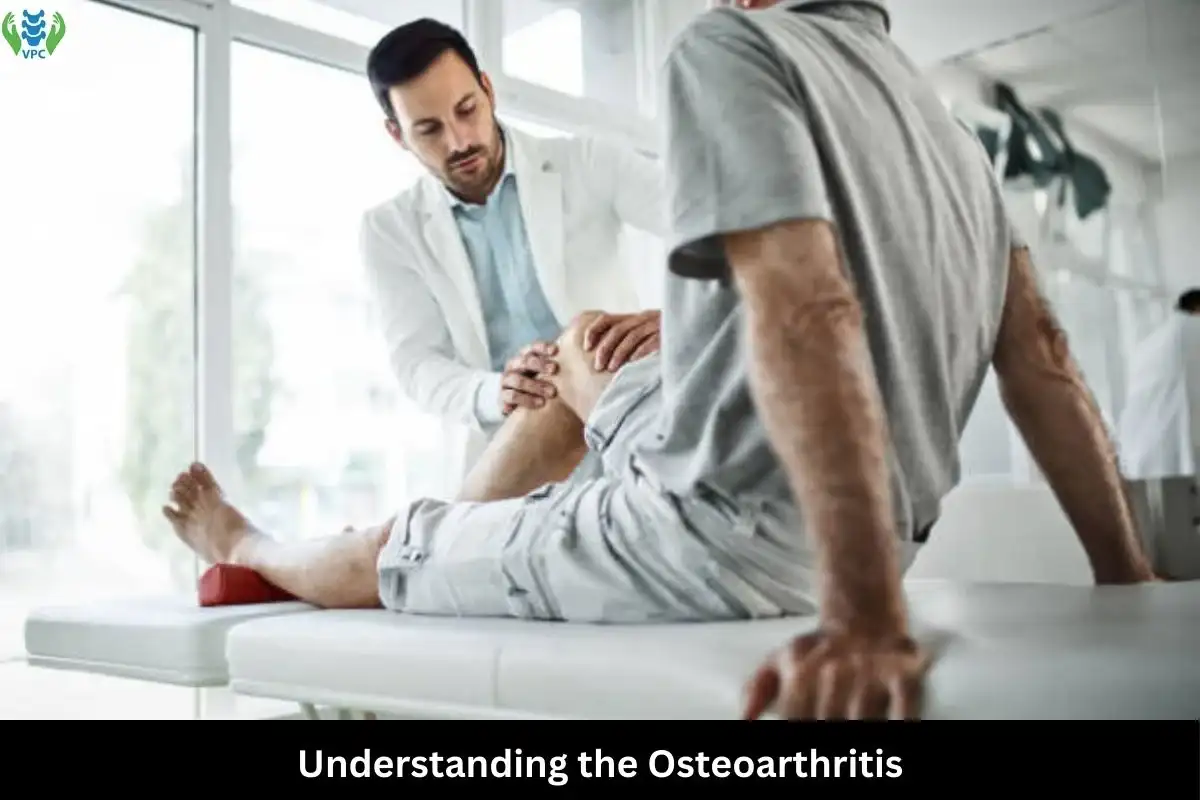
Recover faster with our expert physiotherapists. Schedule your Appointment Today.
Want to know more about the reason of back pain and neck pain. Read more.
Understanding the Osteoarthritis
Osteoarthritis is a condition that causes the loss of joint cartilage. It occurs due to several factors:
Causes and Risk Factors
- Aging: As people get older, their joints naturally wear down.
- Joint injury: Past injuries, like fractures or ligament tears, can lead to osteoarthritis later in life.
- Obesity: Extra weight stresses joints, especially the knees, leading to faster wear and tear.
- Genetic predisposition: Certain individuals may inherit a higher likelihood of developing osteoarthritis.
- Repetitive strain: Over time, repetitive motion-based tasks and activities can cause gradual degeneration of joints and stress.
Symptoms
- Joint pain: Joints affected by osteoarthritis often hurt, especially after moving them.
- Stiffness: Joints may feel stiff, especially in the morning or after resting.
- Swelling: The area around the joint can become swollen and puffy.
- Tenderness: The joint may feel tender when you press on it.
- Reduced range of motion: Moving the joint fully might become more burdensome, limiting flexibility.
Diagnosis
- Evaluating medical history: Doctors ask about your symptoms and past injuries or conditions.
- Physical examination: Doctors check the affected joints for pain, swelling, and flexibility.
- Imaging tests: X-rays or MRIs provide pictures of the joints to see the extent of cartilage damage.
- Joint fluid analysis: Sometimes, doctors test the fluid in the joint to rule out other conditions.
Understanding osteoarthritis’s causes, symptoms, and diagnosis helps individuals seek the right treatments to manage the condition and improve their quality of life.
Want to know more about Sciatica? Find detailed answers here
Diagnosis of Osteoarthritis
The diagnosis of osteoarthritis requires a comprehensive medical evaluation and imaging tests to assess the condition’s severity. Healthcare providers evaluate symptoms and medical history and perform physical examinations.
Your doctor might ask for X-rays or an MRI to determine what’s wrong with your joint. These pictures help them see inside your body. Knowing precisely what’s terrible is important to plan the best treatment.
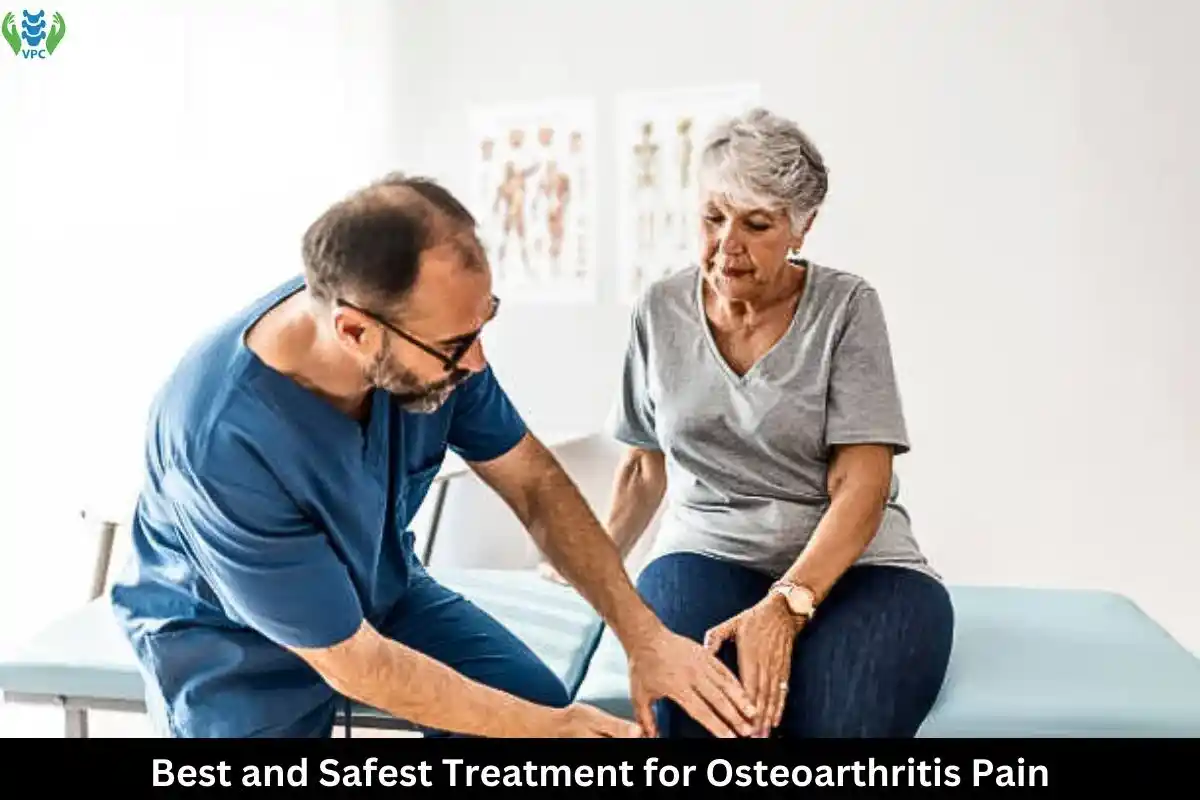
Enjoy the physiotherapy services from our skilled professionals. Book your Appointment Now.
What is the Best and Safest Treatment for Osteoarthritis Pain?
Finding the optimal and safest treatment for osteoarthritis pain relies on various factors, such as the individual’s condition and personal preferences. Consulting with a professional consultant is important to customize the treatment plan and ensure its effectiveness.
Most Effective Osteoarthritis Treatments
The effectiveness of osteoarthritis treatments can vary based on individual factors. However, commonly effective options include NSAIDs, physical therapy, weight management, and assistive devices. Talking to a doctor is important to determine the best way to handle your situation.
Non-Surgical Treatment Options
Non-surgical treatment options for various conditions encompass physical therapy and exercise to enhance mobility and strength, pain management medications, adopting a healthy weight through lifestyle modifications, and utilizing assistive devices or braces for support. You can also try exercise, heat or cold packs, and other treatments to help with osteoarthritis. Talking to a doctor about what would work best for you. is a good idea.
Surgical Treatment Options
Surgical options for osteoarthritis involve interventions to address the condition. Surgery can replace damaged knees, hips, or shoulders with artificial ones. Arthroscopy is a minor surgery that involves looking at and fixing joints. Knowing about this and other options helps you choose the proper treatment.
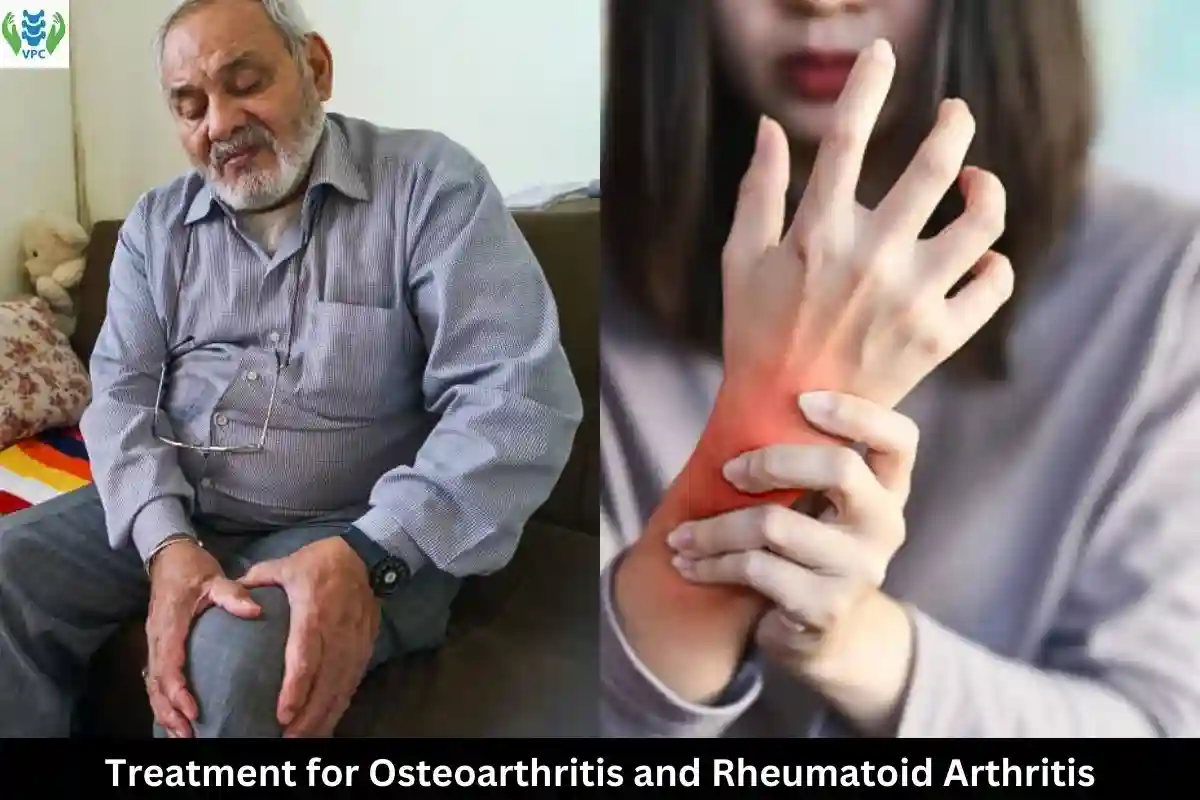
What are some easy ways to relieve lower back pain? Read more for details.
Treatment for Osteoarthritis and Rheumatoid Arthritis Relieve
The best way to treat arthritis depends on each person’s situation, like how bad it is, their symptoms, and their health history. Treatment options encompass medications, physical therapy, lifestyle adjustments, assistive devices, and occasionally surgery. Talking to a helper who knows a lot can help you make a special plan just for you.

What is the Alternative Treatment for Osteoarthritis?
The perfect alternative treatment for osteoarthritis varies for individuals, depending on their preferences and needs. Commonly explored options include acupuncture, herbal remedies, massage therapy, yoga, and dietary supplements. Consulting a healthcare professional is essential to find the most appropriate alternative treatment that complements the overall management of osteoarthritis.

Feel stronger and healthier with physiotherapy. Book your session.
What Helps Reduce Osteoarthritis?
Reducing osteoarthritis pain and improving well-being can be achieved through several simple strategies:
- Pain Medications: Use pain relievers like acetaminophen or ibuprofen to reduce pain and inflammation. Follow your doctor’s instructions.
- Physical Therapy: Physical therapy exercises strengthen muscles and improve joint function. A therapist can create a program for you.
- Hot and Cold Therapy: Use a warm towel or heating pad to relax your sore muscles and help them feel better. For new injuries, use ice packs to reduce the hurt and allow the swelling to decrease.
- Assistive Devices: Use canes, braces, or special shoe inserts to support your joints and reduce pain.
Healthy Lifestyle
- Weight Management: Losing weight can take pressure off your joints.
- Balanced Diet: Eat healthy foods like vegetables, fruits, and fish to reduce inflammation.
- Gentle Exercise: Walking, swimming, and yoga can keep you flexible and strong without hurting your joints.
- Professional Advice: Talk to a doctor to create a personalized plan that combines these strategies for the best results.
Following these easy steps can also manage osteoarthritis pain and improve your daily life.
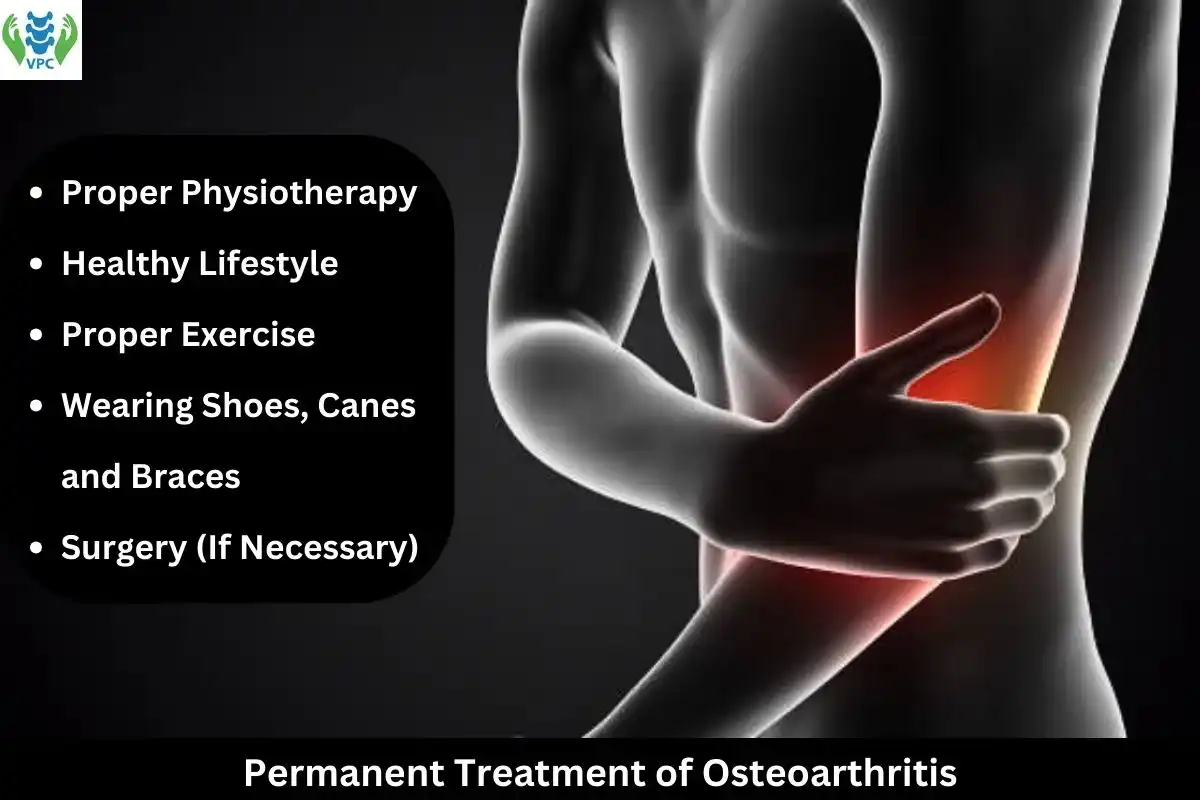
For detailed information on our physiotherapy, feel free to contact us at +8801932-797229.
What is the Permanent Treatment of Osteoarthritis?
Osteoarthritis can’t be permanently cured, but many ways to manage it effectively exist. The main goals are to reduce pain, improve how your joints work, and boost your overall quality of life.
Non-surgical treatments play a significant role in managing osteoarthritis. Doing special exercises and things to help your body can be good. It makes the muscles around your joints strong and helps them move better.
Changing how you live can help a lot. Eating good food, losing weight, and moving around can make your joints feel better. Assistive devices like canes, braces, or shoe inserts can provide additional support and make movement easier.
Surgery might be an option in more severe cases. Joint replacement surgery involves swapping out a damaged joint for an artificial one, which can offer significant relief. Talking to a doctor about what’s best for you is important. They can help you plan to get better, which works for your body and what you want to do. Combining these treatments and following your doctor’s advice can effectively manage osteoarthritis and enhance your quality of life.
Need more details about our physiotherapy services? Call us at +8801932-797229
Potential Benefits and Risks of Osteoarthritis Treatments
When choosing treatments for osteoarthritis, it’s important to understand both the benefits and risks of each option. Treatments can offer significant benefits, such as reducing pain, improving how well your joints work, and enhancing your overall quality of life. However, it’s also crucial to be aware of potential risks, including minor side effects or more severe issues.
To fully understand what each treatment can offer and any possible risks, it’s best to consult with a healthcare professional. They can provide unique advice according to your situation, helping you make informed choices that suit your needs and goals. This way, you can achieve the best possible results in managing your osteoarthritis.

To inquire about our physiotherapy services in detail, call us on +8801932-797229
What Foods to Avoid if You Have Osteoarthritis?
To manage osteoarthritis effectively, avoiding certain types of foods is important. Avoid processed and fried foods, which can increase inflammation and increase weight gain.
Also, limit sugary snacks and drinks because they can worsen inflammation and increase weight gain. Cut back on refined carbohydrates, like white bread and pasta, as they can also add to inflammation.
Additionally, moderate your alcohol intake to avoid aggravating inflammation and affecting how well your medications work. For the best advice, consult with healthcare professionals or dietitians who can help you make the right dietary choices for managing osteoarthritis.
Can I Live a Normal Life with Osteoarthritis?
With effective management, you can continue to live your everyday life, even with osteoarthritis. A healthy lifestyle is crucial to this process. Moving your body often helps your joints bend easily and makes the muscles around them strong. Maintaining a healthy weight reduces joint stress, alleviates pain, and improves function.
Additionally, a balanced diet provides the nutrients your body needs to support joint health. These things can help you feel better and live a happy life, even with arthritis. These steps can help manage symptoms and improve your overall well-being.
It’s also important to seek medical help, work with a physical therapist, and use assistive devices if needed. Making minor adjustments to your daily life can help you stay active and comfortable. Since everyone’s experience with osteoarthritis differs, talking to healthcare professionals will give you personalized advice on managing your condition effectively.
Interested in our physiotherapy services? Get in touch at +8801932-797229

Case Studies and Success Stories
Case studies and success stories about osteoarthritis are important because they provide inspiration and practical insights. These stories share real-life experiences and show how different treatments have helped people improve their condition.
Reading about others who have successfully managed their osteoarthritis can offer hope and motivation. These stories highlight the positive effects of various treatments, demonstrating how they can make a big difference. They encourage the belief that it is possible to manage and even overcome the challenges of osteoarthritis, making the journey feel more achievable.
In summary, it’s essential to review the key points. If you have osteoarthritis, getting professional medical advice is crucial. Early intervention and thorough care are necessary for managing the condition effectively.
The best treatment for osteoarthritis involves addressing symptoms and starting suitable therapies as early as possible. This will help you feel better and do more. Consulting healthcare professionals is critical to creating a personalized care plan and achieving the best results.
Written by.
Dr. Saiful Islam, PT
BPTh (DU), MPTh (Orthopedics) – NIPS, India
PG Certificate in Acupuncture, India
Specially trained in Ozone Therapy, USA and Ozone Forum, India.
Physiotherapy Consultant, Vision Physiotherapy Center.
To consult: 01760-636324 , 01932-797229 (9:00 AM to 9:00 PM) and make an appointment.
Our Facebook page: Vision Physiotherapy Center
Sources
Mayo Clinic- Osteoarthritis – Symptoms & causes
Arthritis Foundation- Osteoarthritis: Symptoms, Diagnosis, and Treatment
Healthline- Osteoarthritis: Symptoms, Causes, Treatment, and More


